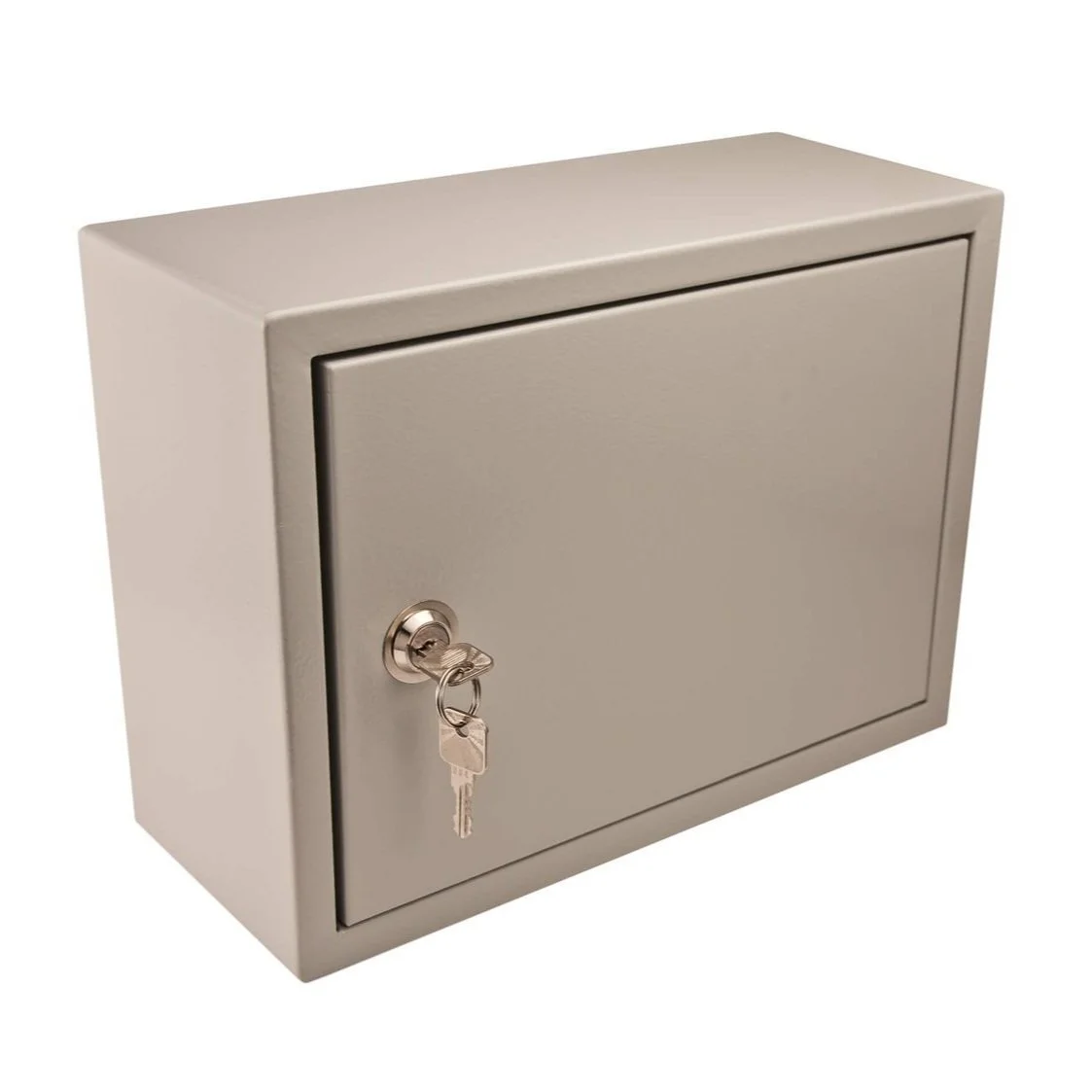What is a Narcotics Cabinet?
When it comes to narcotic cabinets, many people have a specific image in their heads as to what they look like. They often think of a metal cabinet that’s either bolted to the floor or wall. The cabinet is opened with two separate, standard keys and paired with a paper log. While this image satisfies the requirements for narcotic storage, there are a variety of drastically different looks that a narcotic cabinet can take on. But before diving into how narcotic cabinets can differ from one another, it’s important to define what a narcotic cabinet actually is.
In a simple definition, a narcotic cabinet is a substantially constructed storage device that can securely lock narcotics based on factors such as double-locking and a variety of other features. In this article, we’ll dive into the various features that make a cabinet viable for storing narcotics and what various options are available.
Double-locking Medicine Cabinet
One of the key characteristics of a narcotic cabinet is the ability to double lock its contents. Double locking can be accomplished in a variety of ways. However, one of the most classic ways, the cabinet will often have two separate doors, with one door inside of the other. Each door then has its own key. While this configuration most certainly accomplishes the requirements of double locking, it’s not the only option.
The compartment doesn’t need to have multiple physical barriers to be characterized as double locking. Instead, a cabinet can be double locked with two separate physical locks on the same door, as long as the same key can’t open both locks. This process can also be done digitally as well. Often, most digital cabinets use some combination of fingerprint scanning, PIN codes, or ID badge scanning to accomplish this.
These are great for a foundational level ASCs. But once you’re established you need to level up.
MedServe is an affordable alternative to key-locked narcotic cabinets (pictured to the left) purpose-built for the budgets of small healthcare facilities.
Securely Attached
Another aspect of a narcotic cabinet is its placement within a facility. A narcotic cabinet must not be able to be moved with ease. In other words, the cabinet must be securely attached to a wall, the floor, or a countertop. Otherwise, the cabinet’s double locking serves little purpose if someone can simply pick up the entire container and walk off with it. As a result, the unit must be bolted or screwed to a surface. Because of this and the double locking requirement, it’s often difficult to try and convert a standard storage cabinet into a narcotic cabinet.
Material
If you perform a quick Google search for “narcotic cabinets,” an overwhelming majority will be steel or metal cabinets. While steel is an excellent choice for what your cabinet can be made of, it’s not a must-have. There is a somewhat common misconception that having your narcotic cabinet made of steel is a requirement. However, this is not the case.
In fact, hospitals secure and store their narcotics in machines that primarily use plastic components. When it comes to what hospitals use for narcotic and general medication security, almost all use either Pyxis or Omnicell systems. These two brands have the most robust, sophisticated digital inventory storage in the market. On top of that, they are by far the most expensive. Yet, their machines are made of plastic components. There are a few main reasons for this.
First, most steel cabinets don’t have the resilience to withstand a hammer or crowbar even if they are made of a sturdier metal. The only way to really combat violent intrusions into the cabinet would be a full safe. But those often aren’t feasible for most facilities. Safes often can’t compartmentalize the drugs. This means, that once you open the safe, you have access to everything. This makes audit tracking much more difficult and less reliable. In addition, the weight of a safe means that it often can’t go on a wall or countertop, which limits where the safe can be placed. But even more importantly, safes and steel cabinets don’t combat the version of narcotic theft and loss that’s of most concern to a majority of facilities.
Instead, the discreet loss of inventory is the main threat to most facilities that handle narcotics. By “discreet loss,” we mean this can happen if narcotics are taken without proper documentation, user error, or intentional theft. With these challenges often being the bigger concern for facilities, that’s a big reason why hospitals utilize machines that aren’t constructed of metal. You can learn more about these risks and challenges in this article.
So ultimately, you don’t have to store your narcotics in only a metallic cabinet of some kind. Narcotic cabinets come in many different shapes, sizes, and materials.
Primary Source of Narcotic Loss:
Not, break-ins to the cabinet but narcotics being taken without proper documentation, user error, or intentional theft, or drug diversion.
Audit Logs
When it comes to the log creation, this aspect is critical to what makes a cabinet appropriate for narcotics. Most narcotic cabinets aren’t actually designed to accommodate narcotic logs. They simply secure the inventory. So, the responsibility lies solely on the facility to maintain the required documentation for their narcotics. Usually, this is done through a paper narcotic log that’s kept close to the cabinet. The requirements of what needs to be logged differ slightly from state to state, but the federal requirements from the DEA are rather consistent. However, a paper narcotic record isn’t the only way to make a cabinet narcotic-ready.
Some machines with electronic controls have interfaces that automatically track user activity and drug inventory. The ones that do this create digital logs that provide the same functionality that paper records do. Usually, direct electronic integration of the narcotic records leads to increased costs, but the benefits of increased security and oversight often can be worth it for facilities. This depends on how many narcotics the facility holds and how many staff members are accessing them per day.
What Makes a Narcotic Cabinet?
So in the end, these are the main aspects and requirements of cabinets that store narcotics. Since these characteristics can differ while still meeting the regulations, there is a large amount of variation that can be present from one cabinet to another. But ultimately, this is what makes a cabinet compliant with the regulations for narcotics.
If you’d like to learn more about narcotics security and storage, you can visit MedServe’s Narcotic Cabinet Blog for informative articles related to modern narcotic storage.


